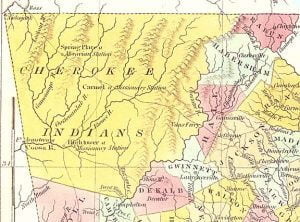Muskhogean Family, Muskhogean Stock, Muskhogean People, Muskhogean Indians. An important linguistic stock, comprising the Creeks, Choctaw, Chickasaw, Seminole, and other tribes. The name is an adjectival form of Muskogee, properly Măskóki (pl. Maskokalgi or Muscogulgee). Its derivation has been attributed to an Algonquian term signifying `swamp’ or `open marshy land’, but this is almost certainly incorrect. The Muskhogean tribes were confined chiefly to the Gulf states east of almost all of Mississippi and Alabama, and parts of Tennessee, Georgia, Florida, and South Carolina. According to a tradition held in common by most of their tribes, they had reached their historic seats from some starting point west of the Mississippi, usually placed, when localized at all, somewhere on the upper Red River. The greater part of the tribes of the stock are now on reservations in Oklahoma.



